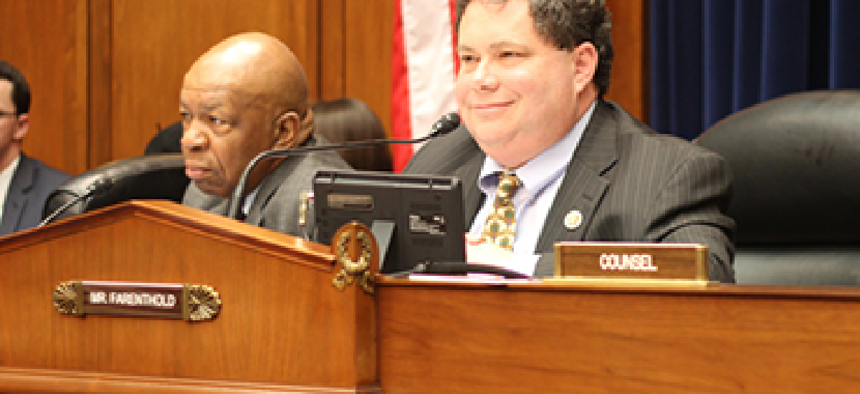Oversight leader blasts OPM for outdated IT tools

House subcommittee seeks answers as GAO report warns OPM is not 'improving or replacing the legacy systems that support retirement processing.'

Rep. Blake Farenthold (foreground) believes OPM's struggles to process retirement claims fast enough is a failure of IT modernization. (File photo)
The Office of Personnel Management is closing in on a July deadline for a pledge to reduce its backlog of retirement claims, and the agency may not make it.
OPM officials blame budget constraints and a surge in claims, but congressional overseers see shoddy IT systems as a critical concern.
Sequestration forced OPM to eliminate overtime hours for its employees working on retirement claims, Kenneth Zawodny, OPM's associate director of retirement services, told the House Oversight and Government Reform committee on May 9.
In addition, the number of retirement claims spiked well beyond OPM's expectations, with about 60,000 new applications between January and April of this year -- a 43 percent increase over the same period last year and 51 percent above OPM's own projections. The surge was driven in large part by U.S. Postal Service employees taking voluntary buyouts.
"It's too early to understand the impact" of the end to overtime on OPM's pledge to reduce backlog, Zawodny said at a May 9 hearing of the oversight committee's federal workforce subcommittee. The target for July is to ensure that 90 percent of claims are processed within 60 days or fewer.
Panel chairman Rep. Blake Farenthold (R-Texas), however, pointed to a different cause: OPM's failure to implement needed information technology upgrades to automate retirement claims processing. OPM is using "a COBOL system patched together with spreadsheets," Farenthold said, adding that "the federal government couldn't compute its way out of a paper bag."
OPM has a history of failed attempts at modernizing its retirement processing system, with several projects dating back to 1987 scrapped because of poor performance. The agency's most recent modernization plan was cancelled in 2011, and since then OPM has committed itself to phasing in incremental IT reforms, including improvements that allow federal retirees to access account information online. But according to a Government Accountability Office report prepared for the hearing, the current work "reflects a less ambitious goal for retirement processing timeliness and does not address improving or replacing the legacy systems that support retirement processing."
This year, OPM is slated to spend $85 million on IT systems, and is responsible for paying benefits to 2.5 million federal retirees. Zawodny said he fears that budget cuts will hinder the agency's progress in upgrading computer systems. "Without proper resources, the momentum we currently have processing claims and moving toward IT modernization will be in jeopardy," he said.
Also troubling to the committee was the $103.3 million in improper payments to deceased retirees in fiscal year 2012. OPM's rate of improper payment is low compared to most federal programs, OPM inspector general Patrick McFarland said, "when there are cost-effective steps that could prevent the loss of significant amounts of taxpayer dollars, those steps must be taken." Additionally, the work of group set up to develop methods of targeting possible instances of improper payments or fraud using analytics is stalled, McFarland said.






